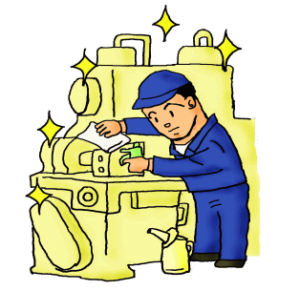In the world-class manufacturing companies there is one common denominator: a firm conviction that their major assets are their machines, equipment and processes, together with the people who operate and maintain them.
The managers of these companies also recognize a simple fact: it is the same people and equipment that are the true wealth creators of the enterprise. They are the ones that add the value.
TPM is about asset care, which has a much more embracing meaning than the word ’maintenance’. The traditional approach to industrial maintenance has been based on a functional department with skilled fitters, electricians, instrument engineers and specialists headed by a maintenance superintendent or works engineer. Maintenance team would take great pride in its ability to ’fix’ a breakdown or failure in minimum time, working overnight or at weekends and achieving the seemingly impossible.In the period after the Second World War this concept of breakdown maintenance prevailed. It was not until the 1960s that fixed interval overhaul became popular; this entailed maintenance intervention every three months or after producing certain number of units.The limitation of the regular interval approach is that it assumes that every machine element will perform in a stable, consistent manner. However, in practical situations this does not necessarily apply. There is also the well-known syndrome of trouble after overhaul: a machine which is performing satisfactorily may be disturbed by maintenance work, and some minor variation or defect in reassembly can lead to subsequent problems.
Japanese methods have been at the heart of the transformation in manufacturing efficiency which has taken place over the last twenty to thirty years and which is still going on. There are common threads running through all of these methods:
- Developing human resources
- Cleanliness, order and discipline in the workplace
- Striving for continuous improvement

- Putting the customer first
- Getting it right first time, every time
Central to all these approaches to manufacturing efficiency is the concept of TPM. Asset care has to become an integral part of the total organization so that everyone is aware of, and involved in, the maintenance function. The end result is that breakdowns become a positive embarrassment and are not allowed to occur. The assets of the production process are operated at optimum efficiency because the signs of deterioration and impending failure are noticed and acted upon. Asset care covers three interrelated issues combining autonomous maintenance and planned preventive maintenance.
- Cleaning & .Inspection: Daily activities to prevent accelerated wear
- Checks and monitoring: Early problem detection and diagnosis
- Preventive maintenance Injection of relevant technical expertise to and service: prevent failure and restore condition

